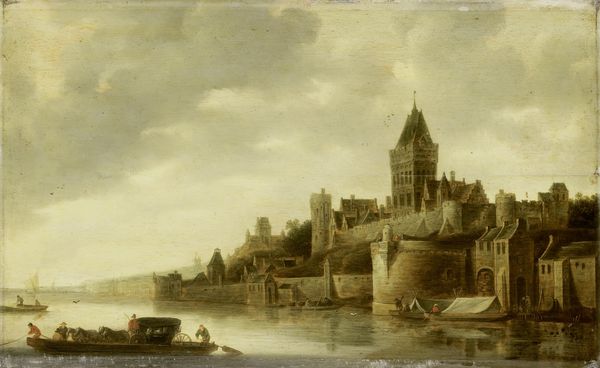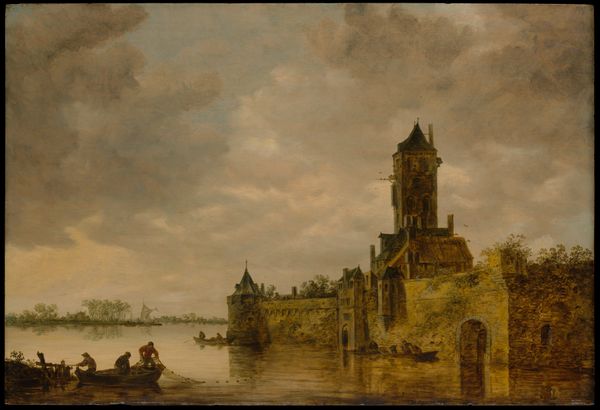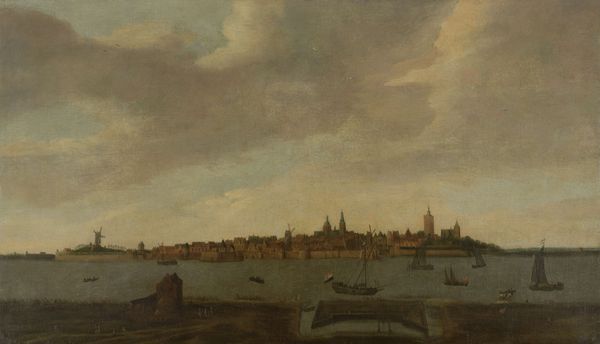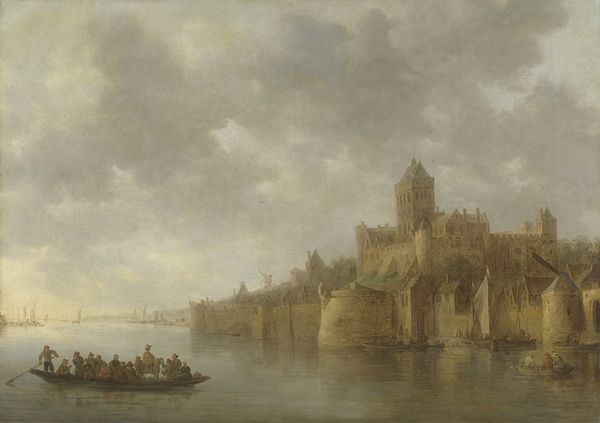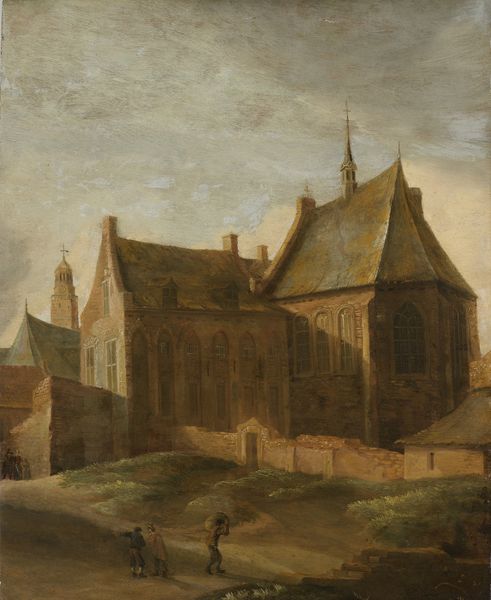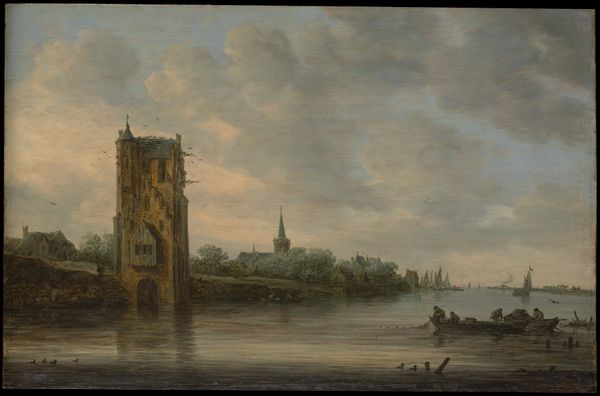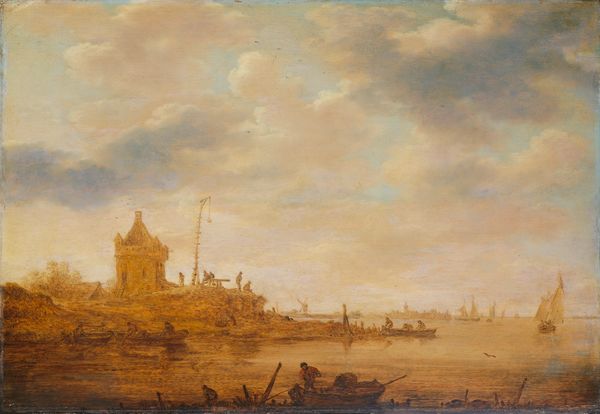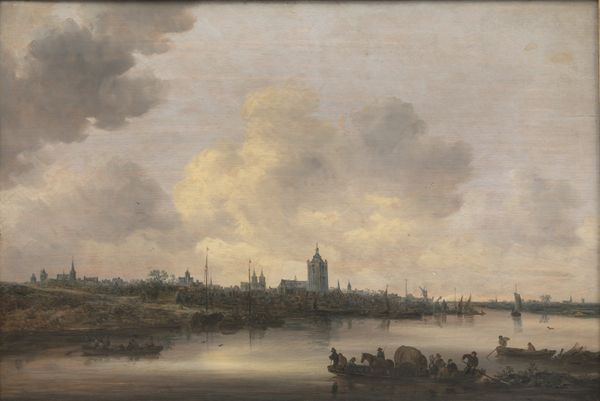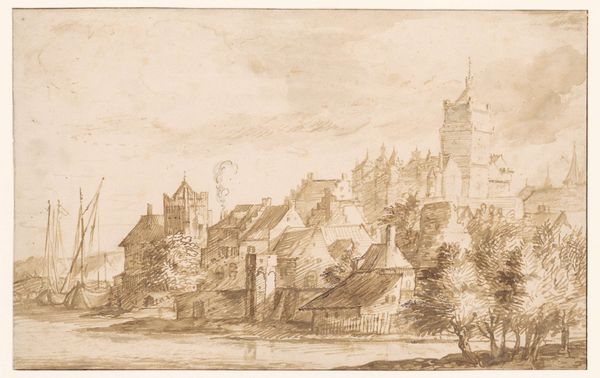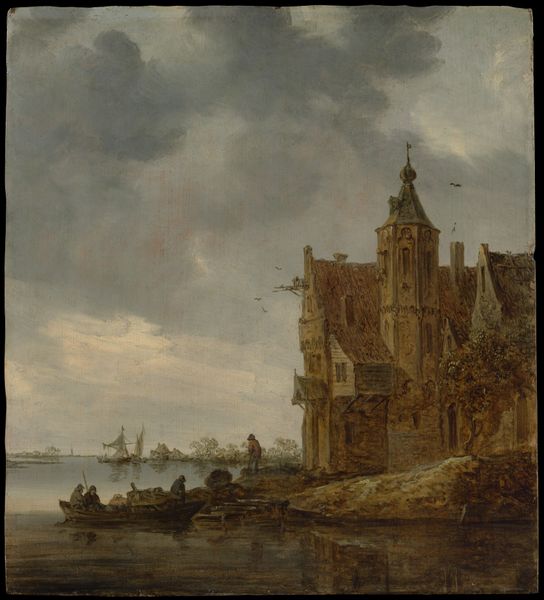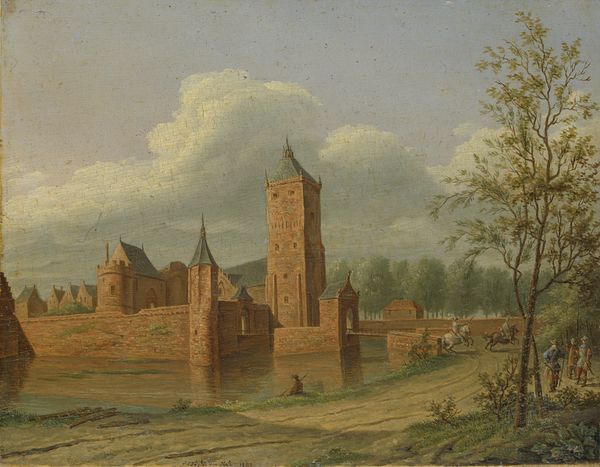
painting, oil-paint
#
dutch-golden-age
#
painting
#
oil-paint
#
landscape
#
oil painting
#
cityscape
#
realism
Dimensions: support height 25.4 cm, support width 30.5 cm, outer size depth 6.7 cm
Copyright: Rijks Museum: Open Domain
Editor: Here we have Jan van Goyen's "View of the Valkhof in Nijmegen," an oil painting from around 1650, currently housed at the Rijksmuseum. I'm struck by the imposing architecture, almost monumental in its somber earth tones. What social narratives do you think this landscape evokes? Curator: This cityscape isn't just about architectural grandeur; it's deeply intertwined with power and its visual representation. Van Goyen paints Nijmegen at a pivotal time. Consider the social hierarchy implicit in the composition: the imposing Valkhof, a former imperial palace, looms over a town gradually shedding its feudal skin. The muted palette itself speaks volumes – perhaps of economic hardship following the Eighty Years' War? Editor: So, it's not simply a record of the landscape, but a commentary? Curator: Precisely! The seemingly objective “realism” is carefully constructed. What do you make of the figures dotted within the landscape? Are they simply picturesque, or do they suggest something about class and access to public space? How does Van Goyen invite the rising merchant class to contemplate this transition of power? The fortifications were also falling into disrepair, so the image raises questions about social progress versus social decay. Editor: That adds a new layer of understanding. It’s almost as if Van Goyen is using the landscape to question who benefits from these societal shifts. Curator: Exactly! It’s a potent reminder that landscapes are never neutral. They're stages upon which societal dramas unfold, reflections of prevailing ideologies, and, crucially, contested territories. So how might the rising merchant class, empowered after the peace, feel looking upon an old ruin? Editor: I had never considered the political dimension of landscape painting before; I've only focused on iconography. Curator: Hopefully, this provokes further thought! The 'Dutch Golden Age' involved a lot more grime beneath the 'golden' surface.
Comments
No comments
Be the first to comment and join the conversation on the ultimate creative platform.
